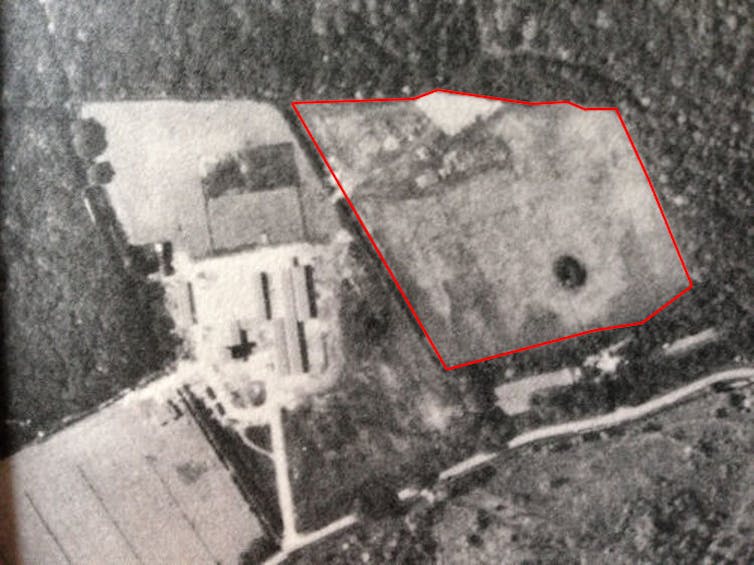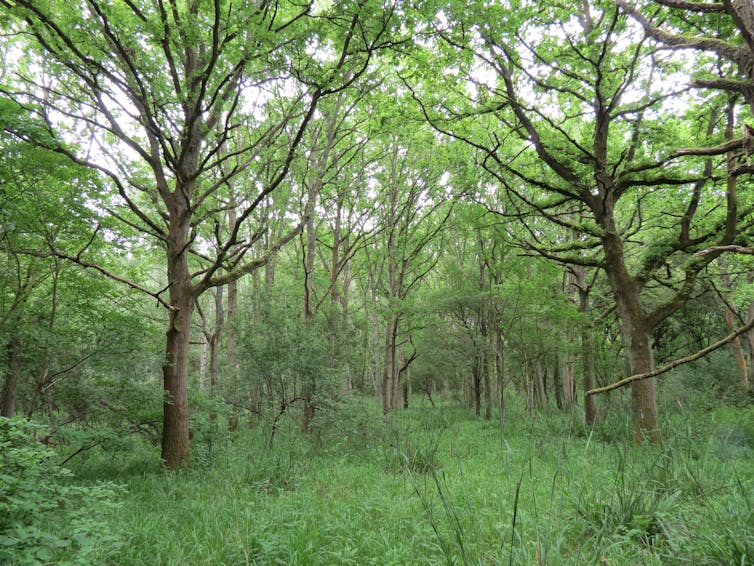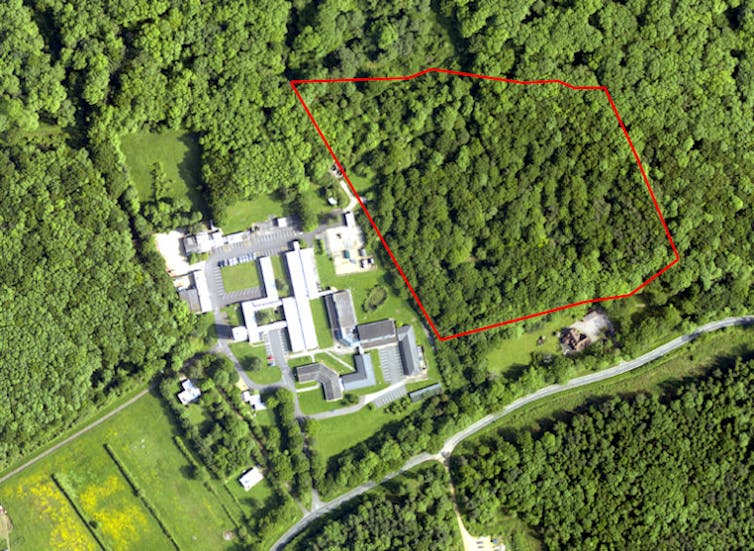In the archive of the UK Centre for Ecology & Hydrology there is a typed note from the 1960s that planted the seed of an idea.
Written by Kenneth Mellanby, director of the Monks Wood Experimental Station, a former research centre in Cambridgeshire, UK, the note describes a four-hectare arable field that lies next to the station and the ancient woodland of the Monks Wood National Nature Reserve. After harvesting a final barley crop, the field was ploughed and then abandoned in 1961.
The note reads:
It might be interesting to watch what happens to this area if man does not interfere. Will it become a wood again, how long will it take, which species will be in it?
So began the Monks Wood Wilderness experiment, which is now 60 years old. A rewilding study before the term existed, it shows how allowing land to naturally regenerate can expand native woodland and help tackle climate change and biodiversity loss.

How new woodland generates itself
A shrubland of thorn thickets emerged after the first ten to 15 years. Dominated by bramble and hawthorn, its seeds were dropped by thrushes and other berry-eating birds. This thicket protected seedlings of wind-blown common ash and field maple, but especially English oak, whose acorns were planted by Eurasian jays (and maybe grey squirrels too) as forgotten food caches. It’s thought that jays were particularly busy in the Monks Wood Wilderness, as 52% of the trees are oaks.

The intermediate shrubland stage was a suntrap of blossom and wildflowers. Rabbits, brown hares, muntjac deer and roe deer were all common, but the protective thicket meant there was no need for fencing to prevent them eating the emerging trees. Those trees eventually rose up and closed their canopy above the thicket, which became the woodland understorey.
The result is a structurally complex woodland with multiple layers of tree and shrub vegetation, and accumulating deadwood as the habitat ages. This complexity offers niches for a wide variety of woodland wildlife, from fungi and invertebrates in the dead logs and branches, to song thrushes, garden warblers and nuthatches which nest in the ground layer, understorey and tree canopy.

The Monks Wood experiment benefited from the field lying close to an ancient woodland, which meant an ample supply of seeds and agents for their dispersal – jays, rodents, and the wind. Such rapid colonisation of the land would be unlikely in more remote places, or where deer are superabundant.
But there are many woods in the UK that could expand by allowing adjacent fields to return to nature. This would eventually add up to a significant increase in total woodland cover.


ConversionConversion EmoticonEmoticon